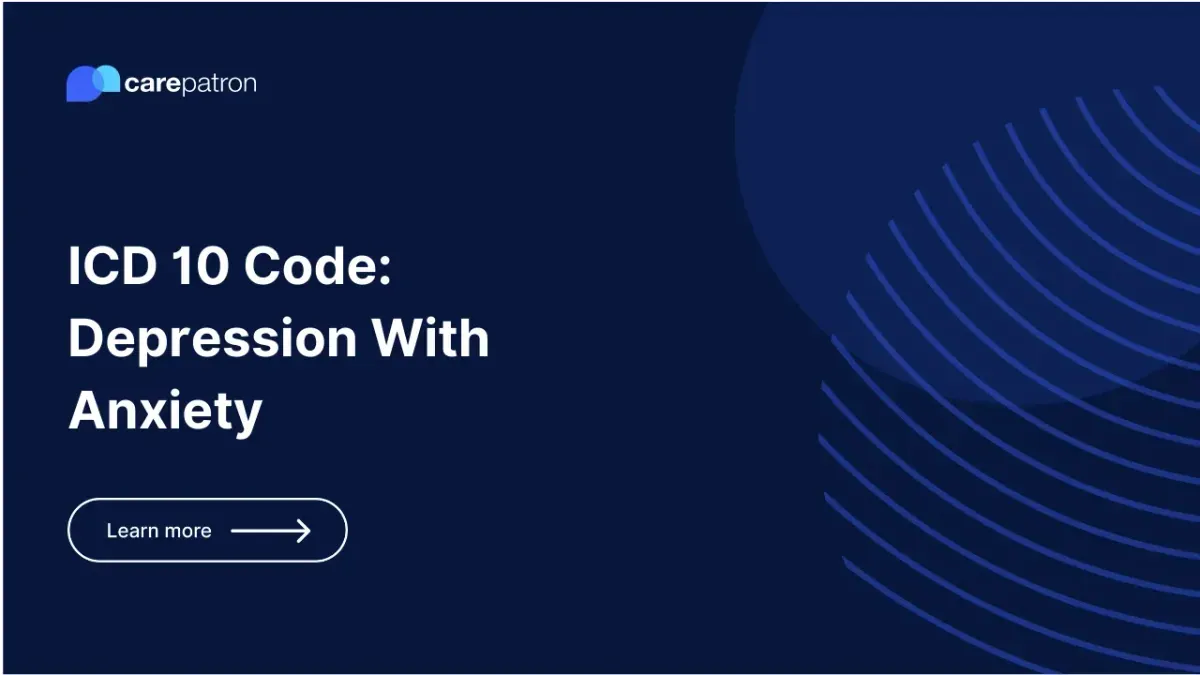
Depression With Anxiety ICD-10-CM Codes
Learn the commonly used ICD-10 codes for depression with anxiety. Understand their clinical implications, billability, and typical treatments.
Use Code
Commonly asked questions
Healthcare professionals often use these codes to diagnose a patient with both depression and anxiety. The codes are based on the patient's reported symptoms, clinical assessment, or results from diagnostic tools.
Common treatments for depression and anxiety include a combination of medication and psychotherapy. Medications may include antidepressants or anxiolytics, while psychotherapy often involves cognitive-behavioral therapy or other forms of counseling.
A diagnosis code for depression with anxiety indicates that a healthcare professional has diagnosed the patient with both conditions. This is based on a comprehensive clinical assessment, and the code accurately documents the diagnosis for treatment, billing, and statistical purposes.
EHR and practice management software
Get started for free
*No credit card required
Free
$0/usd
Unlimited clients
Telehealth
1GB of storage
Client portal text
Automated billing and online payments
